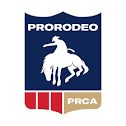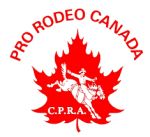
Rodeo is a competitive equestrian sport that arose out of the working practices of cattle herding in Spain and Mexico, expanding throughout the Americas and to other nations. It was originally based on the skills required of the working vaqueros and later, cowboys, in what today is the western United States, western Canada, and northern Mexico. Today, it is a sporting event that involves horses and other livestock, designed to test the skill and speed of the cowboys and cowgirls. American-style professional rodeos generally comprise the following events: tie-down roping, team roping, steer wrestling, Steer roping, saddle bronc riding, bareback bronc riding, bull riding and barrel racing. The events are divided into two basic categories: the rough stock events and the timed events. Depending on sanctioning organization and region, other events such as breakaway roping, goat tying, and pole bending may also be a part of some rodeos. The "world's first public cowboy contest" was held on July 4, 1883, in Pecos, Texas, between cattle driver Trav Windham and roper Morg Livingston.

Bull riding is a rodeo sport that involves a rider getting on a bucking bull and attempting to stay mounted while the animal tries to buck off the rider.

Bronc riding, either bareback bronc or saddle bronc competition, is a rodeo event that involves a rodeo participant riding a bucking horse that attempts to throw or buck off the rider. Originally based on the necessary buck breaking skills of a working cowboy, the event is now a highly stylized competition that utilizes horses that often are specially bred for strength, agility, and bucking ability. It is recognized by the main rodeo organizations such as the Professional Rodeo Cowboys Association (PRCA) and the International Professional Rodeo Association (IPRA).

Steer roping, also known as steer tripping or steer jerking, is a rodeo event that features a steer and one mounted cowboy.

Rodeos have long been a popular competitor and spectator sport in Australia, but were not run on an organised basis until the 1880s.

Mutton busting is an event held at rodeos similar to bull riding or bronc riding, in which children ride or race sheep.
The National Finals Rodeo (NFR) is the premier rodeo event by the Professional Rodeo Cowboys Association (PRCA). The NFR showcases the talents of the PRCA's top 15 money winners in the season for each event.

The Professional Rodeo Cowboys Association (PRCA) is the largest rodeo organization in the world. It sanctions events in the United States, Canada, and Mexico, with members from said countries, as well as others. Its championship event is the National Finals Rodeo (NFR). The PRCA is headquartered in Colorado Springs, Colorado, United States.

Cheyenne Frontier Days is an outdoor rodeo and western celebration in the United States, held annually since 1897 in Cheyenne, Wyoming. It bills itself as the "World's Largest Outdoor Rodeo and Western Celebration." The event, claimed to be one of the largest of its kind in the world, draws nearly 200,000 annually. Lodging fills up quickly during the peak tourist season throughout southern and eastern Wyoming, into northern Colorado and western Nebraska. The celebration is held during the ten days centered about the last full week of July. In 2008, Cheyenne Frontier Days was inducted into the ProRodeo Hall of Fame.
The Raymond Stampede is an annual rodeo held in the town of Raymond, Alberta, Canada on July 1. It is recognized as Alberta's oldest rodeo and Canada's oldest professional rodeo, predating the famous Calgary Stampede by ten years.
History of rodeo tracks the lineage of modern Western rodeo.

Steer riding is a rodeo youth event that is an introductory form of bull riding for younger riders, usually between the ages of seven and fourteen. Instead of bucking bulls, the children ride steers that buck. Steers are used because they are known to have a less volatile temperament than bulls and many breeds weigh less than bulls, which makes them a perfect stepping stone to junior bulls. The steers usually weigh between 500 and 1,000 pounds. Steer riding usually follows mutton busting and calf riding as the participant ages and grows. Many young and aspiring bull riders who train in steer riding compete in the National Junior Bullriders Association.

A stock contractor is an individual or business that provides animals for rodeo competition. Stock contractors supply roughstock - horses for saddle bronc and bareback bronc riding and bulls for the bull riding event, plus steers for steer wrestling and team roping, plus calves for calf roping events. Use of stock contractors who specialize in providing these animals has produced a more uniform range of bucking stock which are also quieter to handle.
Richmond "Richie" Champion is an American professional rodeo cowboy who specializes in bareback bronc riding and became the first bareback rider to earn $1 million at a single rodeo.
Steven Peebles is an American professional rodeo cowboy who specializes in bareback bronc riding. He qualified for the Professional Rodeo Cowboys Association (PRCA)’s National Finals Rodeo (NFR) seven times and won the world championship in 2015, after recovering from a near-fatal injury incurred after being bucked from a horse. He has won many of the elite rodeos, including the Calgary Stampede, the San Antonio Stock Show and Rodeo, the Reno Rodeo, the Cody Stampede, and the Fort Worth Stock Show and Rodeo.

V-61 was a hall of fame bucking bull known only by his brand, V-61. In 1970, he was the Bucking Bull of the NFR. In 2012, the Texas Rodeo Cowboy Hall of Fame inducted V-61. In 2015, the Bull Riding Hall of Fame inducted him into its inaugural class. In 930 attempts, only four bull riders managed to complete rides on him for a total of five qualified rides. His owner retired him in January 1974 and he died later that year.

The Canadian Professional Rodeo Association (CPRA) is the governing body of professional rodeo in Canada. Its championship event is the Canadian Finals Rodeo (CFR) held every November.
Virgil F13 is a rodeo bucking horse. He is specialized mainly in bareback bronc riding, but is sometimes used in saddle bronc riding. Although born in North Dakota, United States, he has lived most of his life in Alberta, Canada. Virgil is a two-time Professional Rodeo Cowboys Association (PRCA) Bareback Horse of the Year, as well as a two-time Canadian Professional Rodeo Association (CPRA) Bareback Bucking Horse of the Year. He won the award in both organizations in the same years; 2017 and 2018. He was also awarded the Bareback Horse of the Canadian Finals Rodeo (CFR) four times from 2015 to 2018, as well as the Bareback Horse of the National Finals Rodeo (NFR) in 2017. He is also the horse that was ridden for the highest-scored bareback ride in PRCA history, which occurred in 2022.
Medicine Woman #302 was an American rodeo bucking horse that specialized in saddle bronc riding. She competed in the Professional Rodeo Cowboys Association (PRCA) and was a four-time PRCA Saddle Bronc Horse of the Year. She won the award in 2011, 2014, 2015, and 2016. She also was the Saddle Bronc Horse of the National Finals Rodeo (NFR) in 2010 and 2015. In 2022, she was posthumously inducted into the ProRodeo Hall of Fame.
Dirty Jacket #474 is an American rodeo bucking horse that is specialized in saddle bronc riding. He competes in the Professional Rodeo Cowboys Association (PRCA) and won the 2014 and 2015 PRCA Bareback Horse of the Year award.










